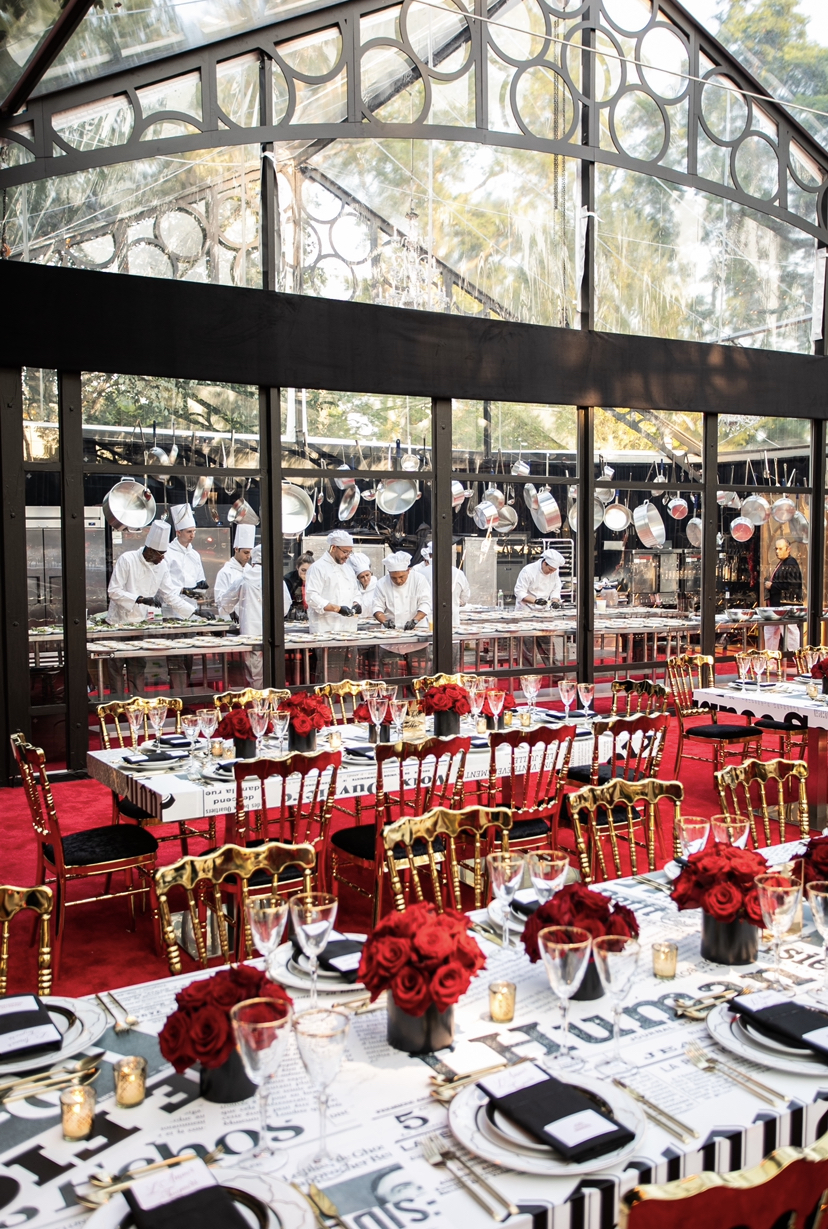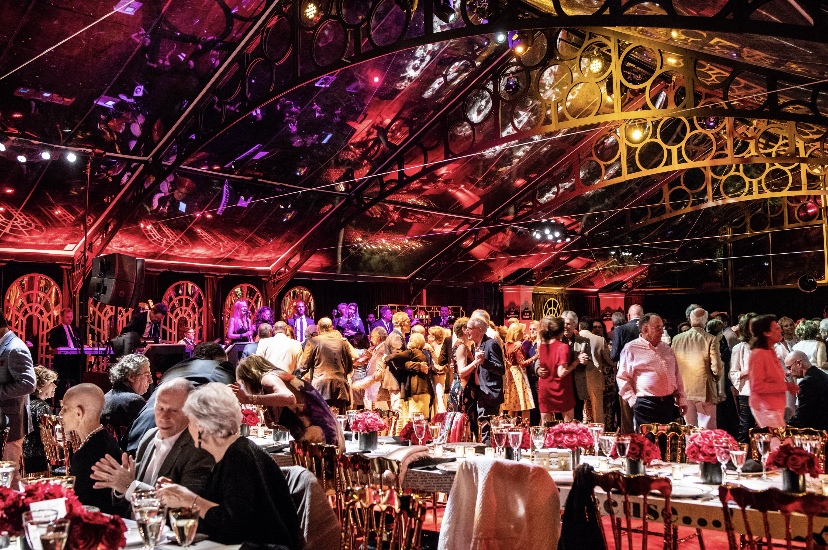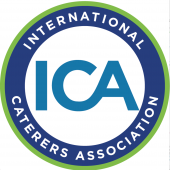It’s amazing what you can do with a tent to make your event really come alive. Many people just starting out in the catering and hospitality business might be slightly taken aback when they learn that a tent could be custom built over a swimming pool with transparent flooring or alongside a 100-foot cliff.
If the tent has that special sort of “ooh, ahh” factor, chances are, it’s a logistical challenge. Robin and Jeffrey Selden, managing partners of Marcia Selden Catering, recall one of their favorite tent setups—a live kitchen arranged in the center of a tent.

Photo courtesy Marcia Selden Catering & Events
“That was by far the coolest tent we’ve done,” Robin Selden explains. “The client envisioned a French-inspired open kitchen with shiny equipment. She wanted the kitchen open so guests could get a close-up of the action throughout the evening.”
Tent process from start to finish
Not all tents require extreme sport planning, but they should all account for the client’s event vision, inclement weather and other important factors. Here are some important steps to take when planning your tent arrangements.
1. Start with a detailed walk-through with the tent company. Survey the property and discuss the guest experience and flow of the event.
2. Decide where you will be cooking and how that connects to the main tent.
3. Put together a rain plan.
4. Select the appropriate tent that will match the style of the event. Work with the property and narrow down power and parking accommodations.

Photo courtesy Marcia Selden Catering & Events
How to tent around challenges
As it turns out, power is the number one challenge for tented events. This is where generators come in handy. They will need to power cooking equipment, lighting, heating and air conditioning, sound, music and restroom trailers.
“Qualify how many dedicated power lines are needed to cover all of the above,” Selden advises. “Music often takes more than planned for.”
Flooring should also be a main priority. “Make sure that the land is level,” Selden says. “If it’s not, arrange for flooring. The ground must be solid. Tables can sink into soft ground—and so can women’s heels!”
And as anyone who has worked tented events knows, a rain plan requires a lot of thought and should not be taken lightly.
“In June we had a large tented wedding,” Selden remembers. “The bride did not want to obstruct the ceremony’s beautiful view of the Hudson River. Three days before the wedding, the forecast called for rain. The client confirmed that they would move forward with our rain plan. We built a tent over the ceremony area, but in order to give the bride her wish of seeing the Hudson in the backdrop, we had to switch to a navi-trac tent.”
Overall tents are what provide a lot of events with “a venue” that’s custom designed for each individual client.
“We love the challenge in creating something unique and special that incorporates our ideas and our clients’ visions. Tents are all about the element of surprise!” Selden says.
Opening photo courtesy Marcia Selden Catering & Events



